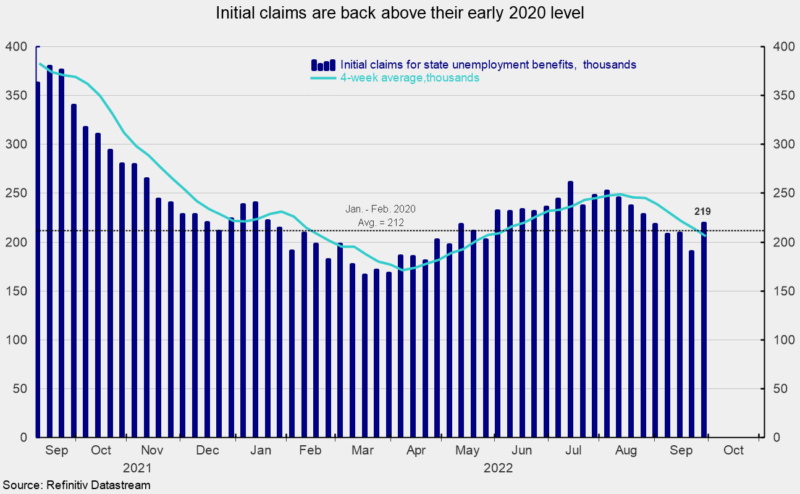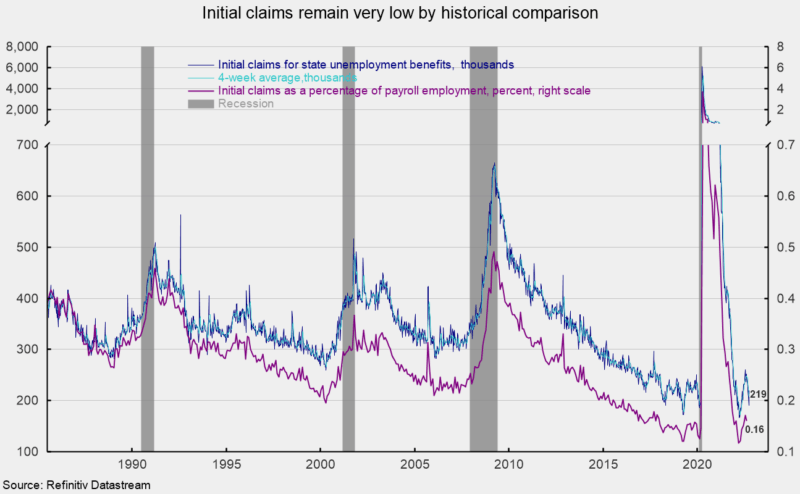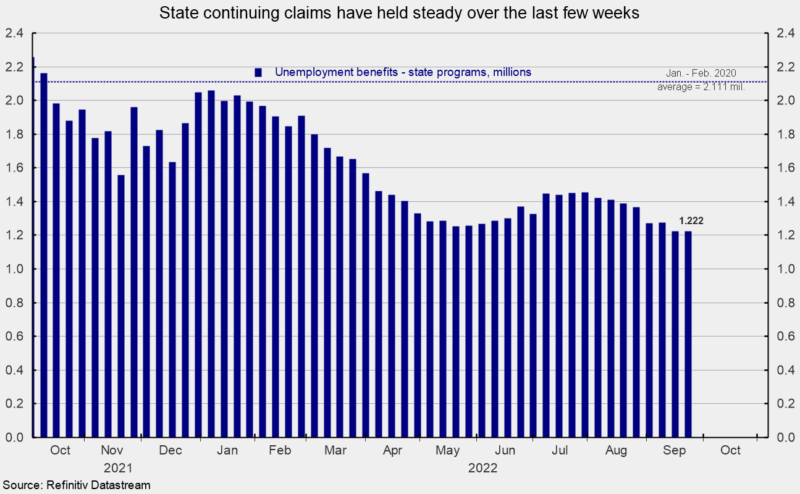Initial Claims Rise but Remain Low
Initial claims for regular state unemployment insurance jumped by 29,000 for the week ending October 1st, coming in at 219,000. The previous week’s 190,000 was revised down from the initial tally of 193,000 (see first chart). Claims posted their biggest weekly gain since June 4th but have fallen for six of the last eight weeks. When measured as a percentage of nonfarm payrolls, claims came in at 0.160 percent for August, down from 0.171 in July but above the record low of 0.117 in March. Overall, the level of weekly initial claims for unemployment insurance remains very low by historical comparison (see second chart).
The four-week average rose to 206,500, up 250 from the prior week. After showing a sustained upward trend since a recent low in early April, the four-week average peaked in early August and has started to trend lower again. Overall, the data continue to suggest a tight labor market. However, continued elevated rates of price increases, an aggressive Fed tightening cycle, and fallout from the Russian invasion of Ukraine remain risks to the economic outlook.
The number of ongoing claims for state unemployment programs totaled 1.222 million for the week ending September 17th, a drop of 53,878 from the prior week (see third chart). State continuing claims had been trending higher but are now trending roughly flat over the last few weeks (see third chart).
The latest results for the combined Federal and state programs put the total number of people claiming benefits in all unemployment programs at 1.247 million for the week ended September 17th, a decrease of 55,549 from the prior week. The latest result is the thirty-second week in a row below 2 million.
While the overall low level of initial claims suggests the labor market remains solid, a sharp drop in the number of open jobs raises some concern. The tight labor market is a crucial component of the economy, providing support for consumer spending. However, persistently elevated rates of price increases already weigh on consumer attitudes, and if consumers lose confidence in the labor market, they may significantly reduce spending. The outlook remains highly uncertain.








